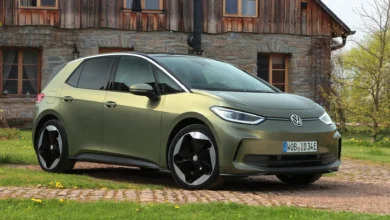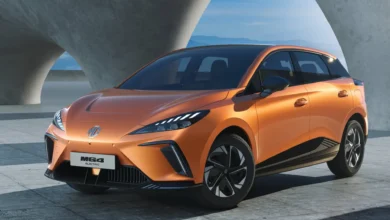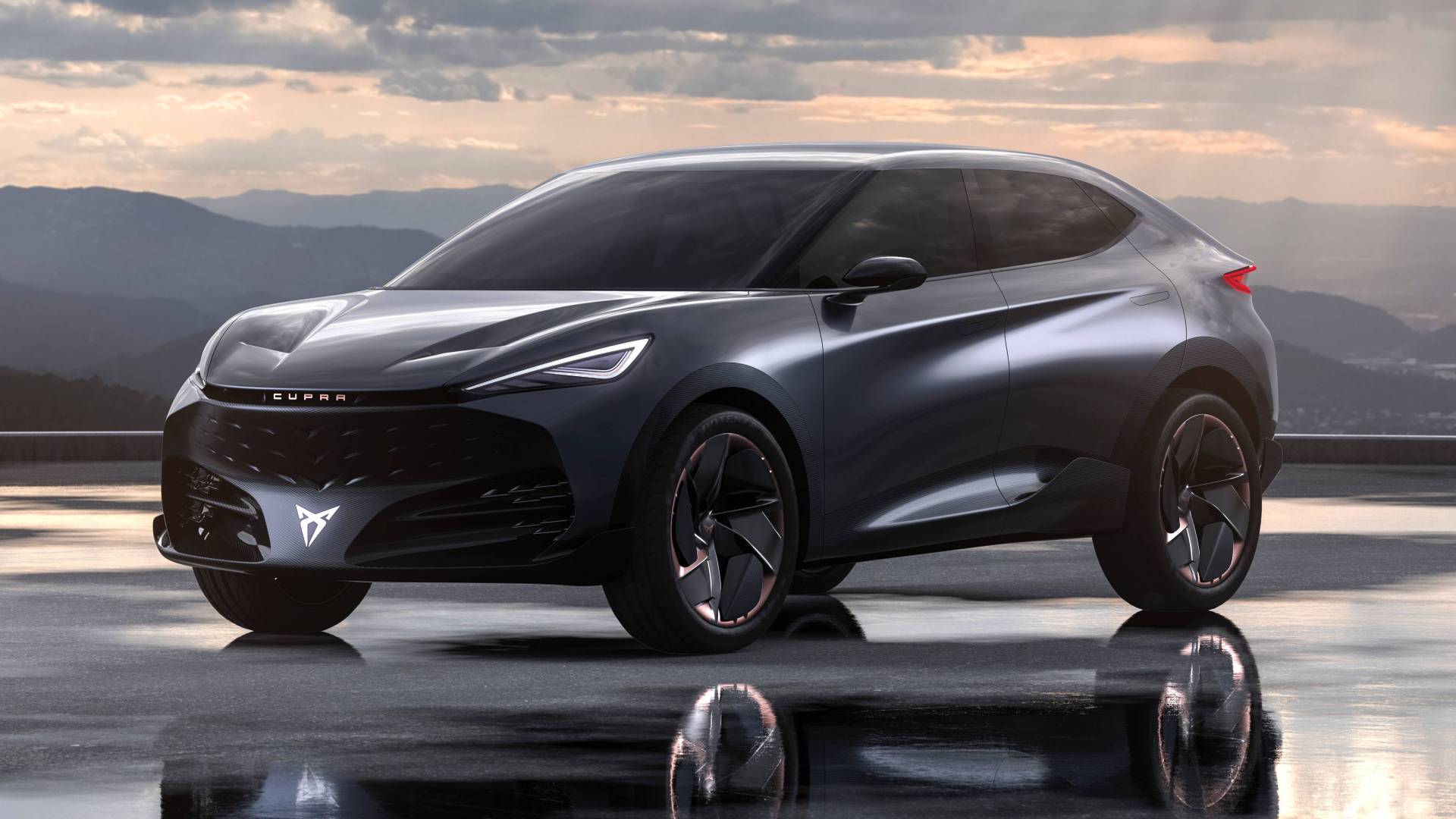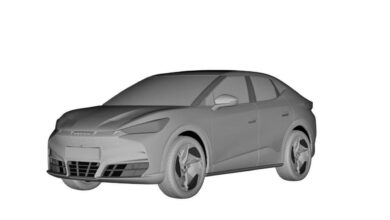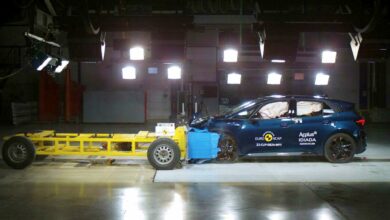
In just four years Cupra has lived many important moments, but surely none the arrival in the market of the Born, the first power of the Spanish brand and, except for the Mii which ‘turned’ to BATTERIES- also Seat as a company.
In BRAND Cars we already had the opportunity to see it live and get on it … but without starting it or rolling it. Now, a month before its arrival at the dealerships, we have closed the circle with the first test of the Cupra Born.
Cupra Born vs Volkswagen ID.3: how are they different?
The big question when analyzing the Cupra Born is: what changes concerning the Volkswagen ID.3, from which it derives? When we saw it for the first time we already discovered that aesthetically its approach is very different: more sporty – clearly – on the outside and more careful on the inside.
The Born is a noticeably more aggressive-looking car, both for its lower and sharper front end, as well as for the rear, with a large roof spoiler and a diffuser that could well make it pass for a gasoline sports car. In addition, all Born will have that ‘look’, which will be to the taste of the brand’s faithful.
Now we have reaffirmed that first feeling of higher quality also when it comes to the interior. The dashboard coating with a nice neoprene-like material, the chosen colors (blues and different shades of gray that combine perfectly with the copper and are not as garish as other more vivid colors), and some small interior touches, such as the redefinition of the center console like a little glove box with a lid, they look good on you.
Other differences with the ID.3 technically refer to the lower ground clearance (15 mm at the front and 10 at the rear), the progressive steering (standard on all Born), and the possibility of modifying the ESP with a Sport e mode. even disconnecting it completely (although it would remain latent in case we do the ‘gross’). This last option is only offered if we mount the widest tires -235 mm.- optional that also includes larger brakes than those of the ID.3.
At the wheel of the Cupra Born 58 kWh: is it sporty?
Cupra has decided to launch the model in its intermediate version, with 204 hp of power and a 58 kWh battery capacity, enough to exceed 400 km of autonomy per recharge. We were able to drive this variant seasoned with the e-Boost system, which temporarily raises power to 231 horsepower, a modification that improves acceleration but slightly reduces autonomy.
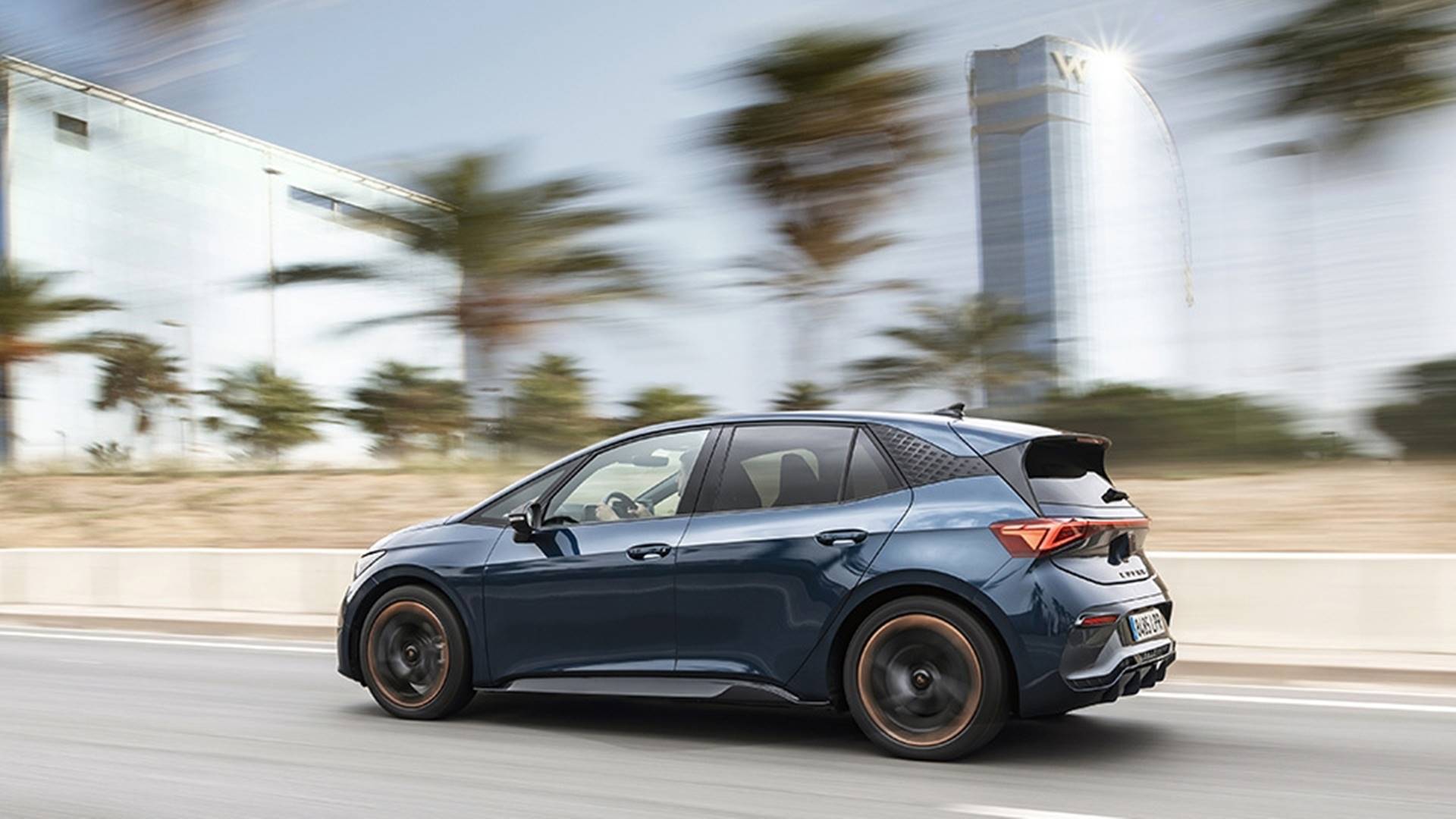
Our contact took place in a single day in Barcelona, with which we could not conclude the autonomy (of 424 kilometers per recharge, the only one that is approved of all the versions of the Born). But yes, at least, to verify that in a mixed route the consumption figures (with some highway, mountain road, and city) are relatively even with the official ones: in 40 kilometers we average 17.6 kWh / 100, compared to 15, 5-16.7 approved, although it is true that they may be a short distance to draw very absolute conclusions.
But those referring to its driving dynamics are more valid. We are not going to dwell much on its good performance, because that is already taken for granted in electric of this caliber, either with 204 or 231 horses. But more important is to see if the Born gets that special Cupra touch, which has to be more dynamism.
The kilos are noticeable
And he succeeds … but not entirely in our judgment. Yes, Martorell’s signature is indeed noticeable in the Born suspension set -up. It is harder than the ID.3 and that gives you more confidence in fast areas. The steering has a good feel and transmits well, although the jumps in the assistance with the different modes (Range, Comfort, Performance, and Cupra, in addition to the Individual) are unnatural, it is a matter of getting used to. And it is quite agile behind when it comes to tackling slow corners.
But … the kilos are too noticeable (not only to the Born but to any current electrician). And yes, surely it is unfair to compare its performance with that of a gasoline sports car, without the burden of the 350 to 500 kilos that the batteries of the Spanish model weigh … but it must be done because more than one potential buyer may doubt, especially for its large acceleration figures (the 204 hp sign the 0 to 50 km / h in 2.9 seconds and the 0-100 in 7.3). The problem is that more than 1,700 kilos (in the best of cases), are too much to say that the Born is an outstanding compact in terms of dynamics.
At the engine level, the differences between the Born with and without e-Boost hardly imply a software modification, but not weight (at least not beyond what the different equipment it may carry) we still do not have details of the equipment. de Los Born with e-Boost-) so except for the acceleration and some extra thrust, the launch units will be quite similar to the ones we were able to test.
It is also important to know that the Cupra Born with e-Boost will only deliver those 231 horses if the charge level and the battery temperature are within a pre-established window. If these conditions are good, we will have that additional push whenever we have the Cupra mode activated or, with any other mode, if we fully depress the accelerator pedal. And that peak power will be available for about 30 seconds.
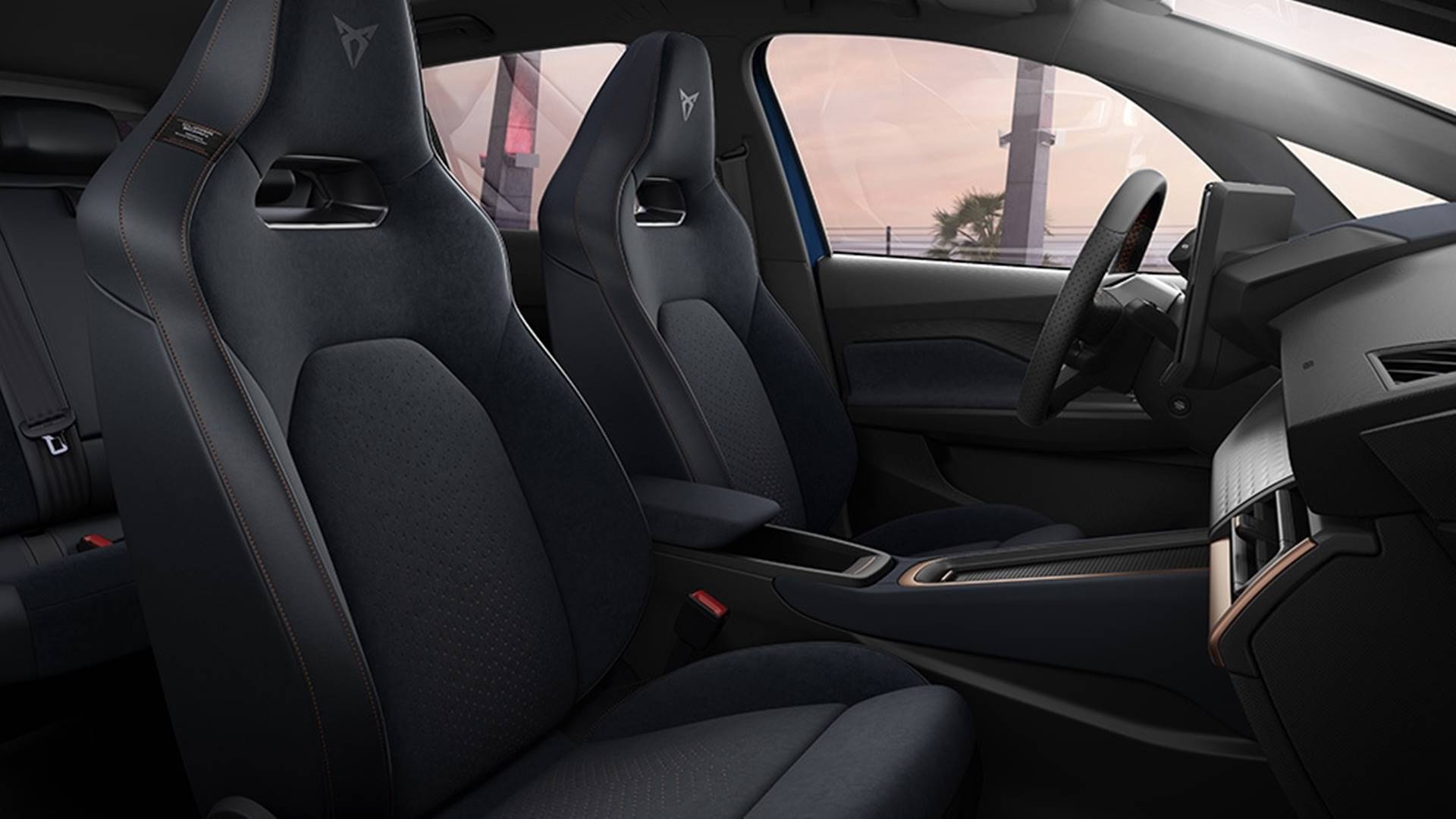
As in the ID.3 have two regeneration options, a more natural (when we select the D on a command next to the speedometer) and one with more retention when shot in B. We do not like that the selector to switch from one to the other is so far back because it forces you to release your hand from the wheel if you want to ‘play’ with the modes, depending on the driving circumstances.
Cupra Born, range and prices
Cupra published in summer a provisional price list that has now undergone variations, at least concerning the first version that will arrive in Spain and for which there are already official rates (somewhat higher than the first ones).
The 58 kWh and 204 hp Cupra Born will cost 38,610 euros, while the launch version Launch Edition, with special equipment, goes to 43,370. In both cases, there will be a direct discount of 1,210 euros (which also has the ID.3) and the bill can be further lowered with the aid of the Moves III Plan, which for electric cars is set at 4,500 euros or 7,000 if scrapped a polluting car.
Its equipment will include two charging cables (mode 2 and mode 3), seven airbags, emergency braking with pedestrian and cyclist detection, involuntary lane change assistant, dual-zone climate control, front and rear parking sensors, 12-inch central touch screen. , 3 “(standard in all Born), 18″ wheels, full led headlights, bucket seats (also in all versions) with Sequal fabric obtained from recycled marine plastic waste or the heated steering wheel and haptic touch buttons. .. Very, very complete.
From January 2022 the range will be completed with three more variants. The one of access to the range, with 150 CV and a small battery of 45 kWh and 340 km of range (for which Cupra initially spoke of 31,600 euros -without help-, but we will finally have to see how much it comes for) and two more powerful for Above: the 58 kWh Born with e-Boost, which raises the power to 231 hp and the Born with e-Boost and e-Range, in this case with a 77 kWh battery, 231 horsepower and a range greater than 500 kilometers.
If we take this variant as a reference, the Cupra Born is a testimonial cheaper than the ID.3: 38,610 compared to 38,860 euros, so the ‘hot potato’ is for the customer, who must opt for the aesthetic or the brand they prefer.
